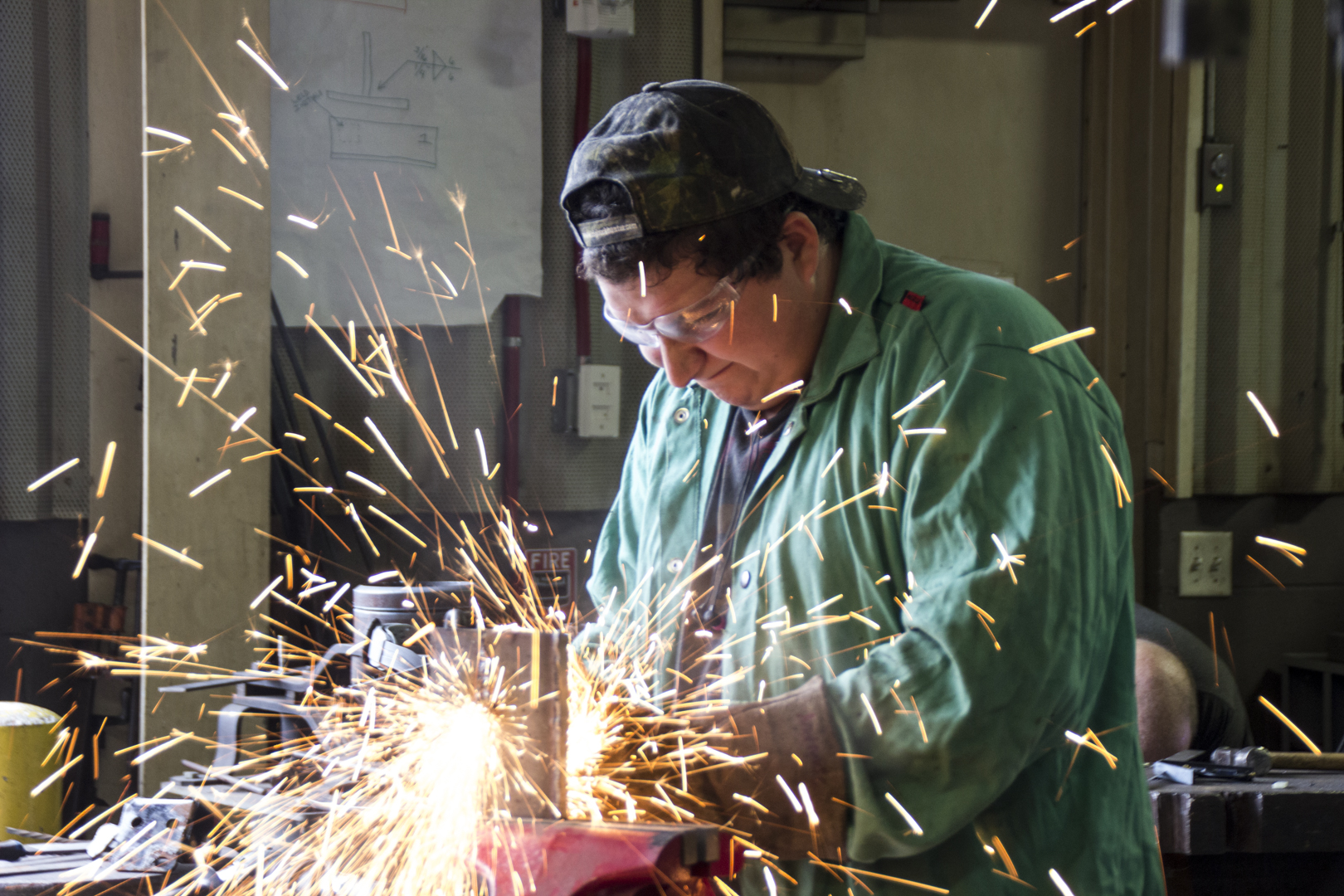All for-profit businesses exist to make money. Manufacturers do this by producing and selling a product. What is the one thing that inhibits a manufacturer’s ability to make money?
The answer is variation. Variation negatively impacts a manufacturer’s business results whether it relates to safety, reliability, quality, delivery, or ultimately cost. If variation impacts a manufacturers bottom line, how does one eliminate variation? Variation is reduced by effective management of standards.

Welding in manufacturing facility
Standards management is the most important concept for manufacturing. The best manufacturers in the world are great at establishing and managing standards. Effective standards management is an essential element of a robust Lean culture.
A simple analogy highlights this point. Why are there so many deaths and accidents on roads and highways each year? In other words, why is there so much variation on highways? It is because drivers do not follow the standards. If the speed limit is 55 miles per hour, it is believed to be okay to go 65 miles per hour.
If a stop light is turning orange, many drivers speed up to make it through the light even as it turns red rather than slowing down to stop. If all drivers respected the speed limit and the other rules of the road, the number of deaths and accidents would decrease proportionally (and so would insurance costs!).
By managing standards, variation is reduced in our manufacturing processes. How does one create a robust culture that respects standards? This effort starts with the management team of the factory. There must be a commitment by the leaders to ask and reinforce three simple questions every time variation occurs on the shop floor.
These questions must be asked by managers, supervisors, and associates alike. These three simple questions are (in order of how they should be asked):
- Is there a standard?
- Was the standard applied?
- Is the standard adequate?
Is there a standard? At the point in the process where the variation occurred, was there a standard that would have addressed the variation? If the answer is no, write and implement a standard. Ensure that all managers, supervisors, and associates are trained and understand the new standard. If the standard has to do with a setting on a machine, if possible, make the standard an automatic standard, or one that can be locked down.
Was the standard applied? If a standard existed, and the variation still occurred, the second question that needs to be asked is “Was the standard applied?” Often, what was thought to be an automatic standard was somehow changed. For standards which are managed by the associates it is possible the standard was not followed. Variation can be eliminated by following standards that have already been established and proven.
Is the standard adequate? If a standard exists, it was applied correctly, and the variation still occurred, it is likely that the standard should be updated because of an evolution in the process. Processes change over time due to changes in customer requirements or suppliers. Regardless, a minor change in the standard after analysis of the variation may eliminate the variation from recurring.
By creating a manufacturing culture that respects and manages standards, a significant portion (for some manufacturing processes greater than 90%) of variation can be eliminated.
Why aren’t more American manufacturers excellent at managing standards? There are many reasons, three of which are:
- The “why” for the standard existing and its impact on the customer was not explained. If an individual understands why something is important and its impact on them, they are more likely to internalize its importance and follow the standard.
– - Americans do not like to be told what to do. Our American culture is based upon freedom. Individuals do what they want if it is not illegal (and even in some cases even when it is illegal – refer to the discussion about traffic laws). Then individuals come to work and must follow several standards. The American worker often must behave differently at work than outside of work, and this can be difficult.
– - Management of standards requires having the courage to point out to someone when standards are not being followed. Not everyone is comfortable telling their peers to follow standards and not all supervisors and managers are skilled at handling these types of conflict.
To overcome these challenges requires deliberate training and reinforcement.
Variation is the enemy of optimized and cost-effective manufacturing. A significant portion of variation can be eliminated through the effective management of standards. Ask three standards-based questions every time variation occurs and instill a culture that respects standards. This approach will have a significant impact on improving a manufacturer’s business results.
–
 About the Author: Mike Ungar is a Certified FocalPoint Business Coach and Trainer. He has 35 years of experience with Michelin in manufacturing and human resources. Mike is a graduate of the United States Military Academy at West Point and the Clemson MBA program.
About the Author: Mike Ungar is a Certified FocalPoint Business Coach and Trainer. He has 35 years of experience with Michelin in manufacturing and human resources. Mike is a graduate of the United States Military Academy at West Point and the Clemson MBA program.





Be the first to comment on "What is the one thing that inhibits a manufacturer’s ability to make money?"